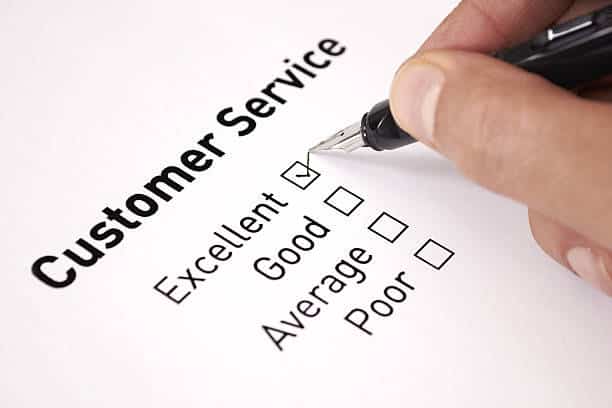When it comes to running a business, one factor that will determine your business’s success is the quality of your customer service. If your business goal is to create a service-oriented organization, you should work towards customer service excellence.
Let’s discuss what service excellence is, the importance of customer service excellence, how to achieve it, and also the systems you can utilize.
What Is Service Excellence?
Service excellence means that service providers consistently meet and sometimes exceed what their customers expect. It’s not just about giving luxury-level service; it’s also about a more nuanced idea of the service and what customers want.
Service excellence is an important part of the service industry, as it can increase customer satisfaction, brand loyalty, and long-term profitability for a service company. Furthermore, it involves providing high customer engagement that leads to trust and higher revenue.
Companies can further increase customer loyalty, revenue and lower costs by achieving customer service excellence.
Why Is Service Excellence Important?
There are various reasons why service excellence is essential. They include:
- 70% of purchasing experiences are determined by how customers perceive they are being handled.
- Service quality can result in viral word-of-mouth, which is also a fantastic strategy for generating brand awareness.
- If you exceed customers’ expectations, they will remain loyal, promote you to others, and further become long-term, trusted advocates.
What Does Service Excellence Constitute?
The following are characteristics of service excellence:
- Understanding the consumer’s needs
- Meeting and also exceeding the expectations of the consumers
- Creative problem-solving
- Timely responses to customers’ complaints and inquiries
- Tailoring services to fit the needs of your target audience
- Good communication skills are a vital part of service excellence
How to Achieve Service Excellence
Organizations pursuing service excellence plans must go above and beyond customer service and further have a customer-centric mindset.
They should also focus on customer satisfaction and how system modifications or new products and services can provide customer value instead of sales or growth. Here are a few tips on achieving customer service excellence:
#1. Customer-Centric Approach
Put customers at the heart of your offers, move at their pace, and also listen closely to their needs and expectations. Also, if you contact customers when a problem comes up before they contact you, it shows that you care and is quick to act.
#2. Research and Communication
Thoroughly research your customer base to understand patterns, preferences, and tastes, and further build your products, services, and experiences around these needs.
#3. Hire Employees with Specific Skills
Find employees who are flexible, open-minded, natural problem-solvers, excel at communication, and can also turn complex problems into simple solutions. Also, use visual cues and branding to remind employees of how important service excellence is.
#4. Service Recovery
When a customer complains, you have a brief window of opportunity to make or break all chances for a satisfactory resolution and, ultimately, loyalty.
#5. Delivering on Promises
Service excellence isn’t just about going above and beyond what customers expect; it’s mostly about doing what you say you’ll do and further handling any problems or questions well.
#6. Continuous Improvement
To strive for service excellence, you must keep redefining service standards, learn from customer feedback, and also improve the customer experience.
#7. Feedback
Customer feedback provides unique insights into service. It also assesses customer satisfaction, client behavior changes, and immediate improvement areas. Feedback, particularly complaints, allows you to address the problem before it worsens. It also shows the customer that you’re paying attention and ready to solve their problem immediately.
#8. Equip Your Employees to Deliver Excellence
Give your employees the knowledge and skills they need through workshops and also other training methods that work. Also, set up processes and rules that make it easy to make decisions quickly and give customer service teams the power to solve problems.
#9. Impeccable Product Knowledge
Ensure employees have robust product knowledge, enabling them to suggest solutions for customers’ problems.
#10. Quick Response and Resolution Times
Customers appreciate fast responses and problem resolutions. It is essential to eliminate potential setbacks, such as a lack of personnel or too many manual tasks, to achieve the desired speed of service.
What Is the Difference Between CRM and CMS?
CRM refers to customer relationship management, while CMS refers to content management systems. The main difference between CRM and CMS lies in their purpose and focus.
CRM is used to manage relationships with customers, keep track of interactions, and also organize sales processes. CMS, on the other hand, is used to manage website content and streamline the publishing process.
Customer Relationship Management (CRM)
Customer relationship management (CRM) is a tool that helps you keep track of all of your company’s interactions with customers and potential customers. Furthermore, CRM aims to improve these interactions and grow your business.
- CRM systems help businesses manage contacts, follow up on leads, and report and forecast sales.
- CRM is focused almost exclusively on sales, holding sales teams accountable, and improving their performance.
- CRM is ideal for organizations looking to improve lead management, customer management, and sales strategy insights.
Content Management System (CMS)
A content management system (CMS) is software that helps users create, manage, and also modify content on a website without technical knowledge.
- CMS systems help businesses create websites, manage content, and further set up online stores.
- CMS focuses on content marketing and helps organizations efficiently produce content attracting new leads or prospects.
- CMS is ideal for managing website content, including blog posts, articles, graphics, audio, and also video assets.
What Is Client Management System (CMS)?
A client management system (CMS) is a tool businesses use to track their current and potential customers. It aims to improve customer service, client relationships, and profitability by streamlining processes, managing sales, and setting up targeted customer communications.
Businesses need a client management system to improve customer satisfaction, keep more customers, and get new customers from word of mouth.
The Benefits of Using CMS Include the Following:
- Streamlining the process of content publishing and marketing
- Have detailed analytics of your contents
- Helps with muti-channel publishing to maximize engagement and reach
- Enables your team to add or modify content on the website without learning how to code
- Makes it easier for remote working by enabling accessibility from anywhere in the world.
- Makes website maintenance easier
- Gives your customization options
- Lowers the entry barrier for digital marketing activities, such as content marketing
What Are Examples of Client Management Systems?
Numerous client management systems are available to help manage client relationships, streamline processes, and improve the overall client experience. Some of the top client management systems include:
#1. Salesforce
Salesforce is a popular CRM platform that provides tools for managing sales, marketing, customer service, and support. It helps businesses analyze customer interactions and improve their customer relationships.
#2. HubSpot
HubSpot has a CRM system with features like data and analytics, activity tracking, communication systems, and automated workflows. It helps businesses keep track of customer data, anticipate customer needs, and maintain healthy client relationships.
#3.Smartsheet
Smartsheet is a collaborative work management platform that can be used for client management. It offers tools for project management, document sharing, and communication, making it easy for teams to work with clients and reduce delays and errors.
#4. Monday
Monday.com is a work operating system (Work OS) that can be used as a client management system. It lets businesses manage sales, streamline processes, and schedule communications with specific customers, leading to better customer relationships and more money.
When choosing a client management system, you should look out for integration, customization, scalability, and ease of use.
What Are the Three Different Types of CMS?
There are different types of CMS, they include:
#1. Proprietary CMS
Proprietary CMS is built with proprietary software, and users cannot control or see which features are being built for or are planned for removal. Examples of proprietary CMSs include Sitecore and Adobe Experience Manager (AEM).
They own and control their codebase, which you have to pay to use. Most of the time, these CMSs are made for larger businesses, and users have to ensure that their digital roadmap matches what the vendor has planned for the product or suite.
#2. Component Content Management System (CCMS)
A CCMS helps users manage their content on a granular level. Instead of tracking an entire page or a document, a CCMS tracks a single component—a paragraph, an image, or even a word. This type of CMS is suitable for users who need to manage content more thoroughly.
#3. Document Management System (DMS)
A DMS and a standard content management system share many similarities, as both types of CMS help users, manage documents. However, a DMS focuses on Word, Excel, PowerPoint, etc., while a traditional CMS helps manage documents in web formats, such as PDF or XML.
It can also process unstructured data, including images and videos. This type of CMS is suitable for people who need to manage different types of documents and data that are not structured.
Why Do Companies Use CMS?
Companies use content management systems (CMS) for various reasons, including time and cost savings, collaboration, ease of use, and better content management. Here are some key benefits of using a CMS
#1. Easy Collaboration and Access
A content management system (CMS) lets many people access your website and work together on projects using their own accounts. This means that various team members can add, edit, and update content on the site right from their own devices.
#2. User-Friendly Interface
With a CMS, users don’t have to learn HTML or CSS to create and publish content. No matter their skill level, users across the organization can use the content editor to upload content onto web pages and update it easily.
#3. More Time to Spend on Content
A straightforward CMS system helps improve organization and provides tools and plugins for SEO. This allows content creators to focus on producing quality content instead of dealing with multiple files or codes.
#4. Stronger Collaboration and Organization
A CMS enables multiple content marketing team members to contribute and help publish content. It offers workflow management, content storage, and scheduling capabilities to keep everything organized.
#5. Flexibility and Scalability
A CMS’s easy-to-use interface lets users create, manage, change, and publish content. This flexibility enables businesses to scale their websites easily as they grow, adding new features, functionality, and content without requiring extensive technical expertise.
#6. Cost-Effective Solution
A CMS is an easy and inexpensive way to manage content. It lets companies manage and share their content without hiring a full-time team of content developers.
#7. Independent Website Management
A significant benefit of a CMS is that it lets you update your website anytime without hiring a web developer or designer. You can add new content, change the look and feel, and update your products and services independently.
What Are the Four Functions of CMS?
The four core functions of the content management system are:
#1. Content Library
A CMS acts as a centralized location for storing and organizing content. It usually has features like search and folder management that make it easy for users to organize and find their content.
#2. Content Creation and Editing
A CMS allows users to create, edit, and store content in one place. This makes managing content more accessible. This functionality saves time and energy for users who frequently work with content.
#3. User Management and Collaboration
A CMS lets multiple people work on the same content simultaneously. This makes it easier for teams to work together. It also provides role-based access controls, allowing brands to control each team member’s access level.
#4. Ease of Use for Non-Coders
CMS platforms are mostly made for marketers and non-technical users, so they don’t require coding knowledge to update websites and manage content. This capability can reduce website maintenance costs and improve efficiency.
Automotive Service Excellence
Automotive Service Excellence certification, or ASE certification, is a credential for automobile technicians demonstrating their repair and maintenance expertise. This credential requires applicable experience and tests. Also, this certification shows customers and companies that you can fix any mechanical or electrical part in the vehicle.
Automotive Service Excellence Specialities
There are different specialties for individuals who want to gain the automotive service excellence certification focus: painting and refinishing, collision damage estimation, repair and heating, and air conditioning, etc.
Requirements for Automotive Service Excellence Certification Are:
- Select a specialty
- Complete automotive service excellence tests
- Gain experience
Acquiring an automotive service excellence certification can be helpful as it shows dedication, therefore, increasing your employability. Also, it will attract new clientele and assure customers of service satisfaction.
- Best Content Management Software System For Your Website In 2023
- Customer Management Systems(CMS): Simplified Guide to Best CMS In 2023






